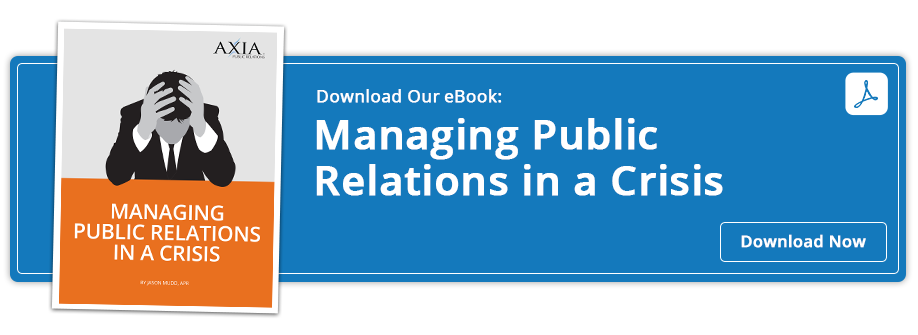 Don’t dig yourself into a hole during a PR crisis
Don’t dig yourself into a hole during a PR crisis
Not having your customer’s pulse for your brand can hurt your business when the public is expecting a response from you, but so can a knee-jerk reaction. No matter what noise is in the background, responsible corporate statements always need to stay on message, on time and be delivered via the appropriate channels.
The key to having your customers hear what you say (and not what others say about you) is using the right words with the right mechanism to deliver them. When thrown into a crisis, stay with your strong foundation and use the tools that have helped your team reach such great heights.
The five rules of public relations messaging remain constant and are critical when an outside entity (or unwittingly, your boss) brings your company into the spotlight:
- Understand your audience. What you say and where you say it contributes to what is possibly the most important rule of good communications. Choose a portal that is appropriate for the message and the group that needs to hear it; otherwise, you will miss the mark.
- Know the topics. When making a statement about one issue, know that, invariably, other tangential topics will arise. The team should ensure that the spokesperson directly addresses all of the concerns and keeps the focus on the issues decided by the company.
- Speak with clarity. People are very attentive when high-profile companies step to the mic. The word choices of the spokesperson need to be honest and relevant, or the public can – and will – turn on the corporation.
- Stay with the plan. When emotional issues arise, the C-suite typically wants to go big and squash any potential for bad media coverage, but this can create worse issues. Focus on the brand strategy and messaging that hasn’t been rushed; make sure you prioritize content.
- Maintain your credibility. The spokesperson chosen should be a reflection of the issues at hand, as should the level of attention the problems need (which includes the determination of the necessity of a personalized touch).
These rules apply to all media platforms, including social media. It’s good to remind executives to refrain from impulsively commenting on social media in an effort to manage a crisis. Using these modern platforms can devolve into a cat-and-mouse battle that avoids issues, erodes credibility of your spokesperson and degrades the brand. Because social media is at the fingertips of leaders, you may find that you have to clean up after the boss takes a stand.
When you need help on tough public relations decisions, Axia Public Relations can assist – with crisis management and prevention. For immediate help, download Axia’s guide Managing Public Relations in a Crisis or contact us for assistance to get the train back on track.

 Heather M. Hilliard is a marketing and strategic planning professional with expertise in crisis management communications. With two master’s degrees and her international Certified Emergency Manager credential, she has worked through disasters as well as “normal business” to offset the impact of both large- and small-scale events in a variety of industries. She is an adjunct professor at Tulane University and has worked for Axia Public Relations since December 2015. Connect with Axia on Twitter @axiapr or tell us what you think in the comments below.
Heather M. Hilliard is a marketing and strategic planning professional with expertise in crisis management communications. With two master’s degrees and her international Certified Emergency Manager credential, she has worked through disasters as well as “normal business” to offset the impact of both large- and small-scale events in a variety of industries. She is an adjunct professor at Tulane University and has worked for Axia Public Relations since December 2015. Connect with Axia on Twitter @axiapr or tell us what you think in the comments below.
Featured image credit: 123rf.com
Topics: public relations, crisis communications, shared media


Comment on This Article